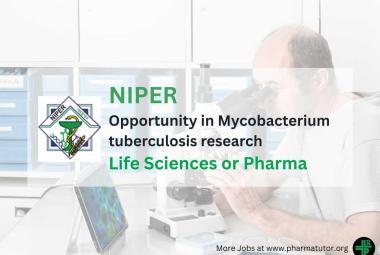{ DOWNLOAD AS PDF }
ABOUT AUTHORS
Megha Padiyar1, *Sourabh D Jain1, Deepak Birla1, Jayanti Mukherjee1, Vimukta Sharma2
1Shri Bherulal Pharmacy Institute, Indore (M.P.), India
2BM College of Pharmaceutical Education and Research, Indore (M.P.), India
*sourabhjain072@gmail.com
ABSTRACT:
Herbal Cosmetics are in rising demand in the world market as these are the priceless gift of nature with enhanced activity and lesser or no side effects. The concept of beauty and use of natural cosmetics is as primordial as mankind and civilization. Herbal cosmetics as the name suggests are natural and free from all the destructive artificial chemicals. The present work was aimed to formulate herbal lipstick by using various natural ingredients like concentrated juice of pomegranate seeds (Punica granatum), shikakai, dried ginger powder, lemon juice, coconut oil, bees wax, paraffin wax, strawberry essence, vanilla essence and so on. The formulated herbal lipstick was evaluated and various parameters such as color, melting point, breaking point, force of application, surface anomalies, pH, skin irritation test and aging stability were determined and reported herewith.
[adsense:336x280:8701650588]
Reference Id: PHARMATUTOR-ART-2594
|
PharmaTutor (Print-ISSN: 2394 - 6679; e-ISSN: 2347 - 7881) Volume 6, Issue 7 Received On: 22/05/2018; Accepted On: 02/06/2018; Published On: 01/07/2018 How to cite this article: Jain, S., Padiyar, M., Birla, D., Mukherjee, J. and Sharma, V. 2018. Formulation and characterization of herbal lipstick using colored pigment of Punica granatum. PharmaTutor. 6, 7 (Jun. 2018), 8-10. DOI:https://doi.org/10.29161/PT.v6.i7.2018.8 |
INTRODUCTION:
The demand of herbal cosmetics is increasing steeply as they are skin friendly with no side effects. Normally herbal cosmetics are also referred to as natural cosmetics. (Saha 2006). Herbal cosmetics are formulated by preparing a natural base first in which one or more natural ingredients are incorporated properly. (Chattopadhyay 2005)
Herbal cosmetics are the most recent trend in the field of beauty and fashion. These beauty products supply proper nutrients, enhance health and ensure user satisfaction compared to the synthetic cosmetics. (Bennet & Bennet 1993)
Human skin acts as protective barrier, through which natural ingredients penetrate. Therefore, consumers always search for natural-based cosmetics to avoid allergic reactions and any sort of side effects. Lipstick is a lip coloring agent that has its earliest use dating back to the prehistoric age. At present, the popularity of this product has increased, and the choice of its different shades, textures and luster has become very demanding. (Kaul and Dwivedi 2010 & Kapoor 2005)
Material and Method:
Selection of herbs: The various herbs used in the formulation of herbal lipsticks were selected on the basis of literature survey. (Ellison 1999 & Kokate et al 2007)
Collection of material: The different herbs used in the development of herbal lipstick were collected in the months of Sep-Oct 2017 from the local market of Indore.
Preparation of Colour Pigment: Coloring agent is obtained from seeds of Punica granatum by by pressing, filtration and evaporation of the resultant juice.
Formulation of herbal lipstick: The herbal lipstick was formulated as per general method of lipstick formulation. In brief; all hard and soft waxes were melted in porcelain dish on water bath with decreasing order of their melting point. Concentrated Punica granatum juice was mixed with Coconut oil and heated. Both phases were mixed at same temperature. Strawberry essence, lemon juice, ginger powder, shikakai powder, vanilla essence and Vitamin E were added at 40oC. Then mixture was poured into lipstick mould in excess amount and mould was kept on ice bath. After solidification surplus amount was scrapped with blade. Lipsticks were removed from mould and flamed. Prepared Lipsticks were fitted in Lipstick container and used for further evaluation. (Jain and Sharma 2005 & Sharma 2005) Composition and importance of different ingredients used for preparation of herbal lipstick is shown in Table 1.
Table 1: Ingredients with their prescribed quantity in the formulation of herbal lipstick
|
S/No. |
Ingredients |
Importance |
Quantity (gm)
|
|
1. |
Coconut oil |
Blending properties |
15 |
|
2. |
Paraffin wax |
Glossy & hardness |
30 |
|
3. |
Bees wax |
Glossy & hardness |
35 |
|
4. |
Ripe fruit of shikakai |
Surfactant |
13 |
|
5. |
Punica granatum juice |
Coloring agent |
3 |
|
6. |
Ginger Powder |
Anti-microbial |
2 |
|
7. |
Strawberry essence |
Flavoring agent |
1 |
|
8. |
Lemon juice |
Anti-oxidant |
0.5 |
|
9. |
Vanilla essence |
Preservative |
q.s. |
Characterization of herbal lipstick
It is very essential to maintain a uniform standard for herbal lipstick, keeping this view in mind the formulated herbal lipsticks was evaluated on the parameters such as melting point, breaking point, force of application, surface anomalies etc.
Melting point: Determination of melting point is important as it is an indication of the limit of safe storage. The melting point of formulated lipstick was determined by capillary tube method.
Breaking point: Breaking point is done to determine the strength of lipstick. The lipstick is held horizontally in a socket ½ inch away from the edge of support. The weight is gradually increased by a specific value (10 gm) at specific interval of 30 second and weight at which breaks is considered as the breaking point.
Force of application: It is test for comparative measurement of the force to be applied for application. A piece of coarse brown paper can be kept on a shadow graph balance and lipstick can be applied at 45o angle to cover a 1 sq. inch area until fully covered. The pressure reading is an indication of force of application.
Surface anomalies: This is studied by the surface defects, such as no formation of crystals on surfaces, no contamination by moulds, fungi etc.
Aging stability: The product was stored in 40o C and various parameters such as bleeding, crystallization of wax on surface and ease of application were observed.
pH parameter: The pH of formulated herbal lipstick was determined using pH meter.
Skin irritation test: It is carried out by applying product on the skin for 10 min. (Mithal 2003)
Table 2: Characterization of formulated lipstick containing herbal ingredients
|
S/ No. |
Evaluation parameter |
Inference
|
|
1. |
Color |
Pink |
|
2. |
Melting point |
600-620 C |
|
3. |
Breaking point |
32 |
|
4. |
Force of application |
Good |
|
5. |
Surface anomalies |
No defect |
|
6. |
Aging stability |
Smooth |
|
7. |
pH |
6.5+0.2 |
|
8. |
Skin irritation test |
No |
NOW YOU CAN ALSO PUBLISH YOUR ARTICLE ONLINE.
SUBMIT YOUR ARTICLE/PROJECT AT editor-in-chief@pharmatutor.org
Subscribe to Pharmatutor Alerts by Email
FIND OUT MORE ARTICLES AT OUR DATABASE
RESULTS AND DISCUSSION: The formulation and evaluation of herbal lipsticks was aimed to formulate a lipstick using herbal ingredients. According to literature survey of previous investigation of these herbal plant it may be minimize the side effects as produced by the available synthetic ones. Different natural ingredients were used for formulating natural lipsticks that contain coloring agent which is a natural colorant obtained from Punica granatum and the effect of different natural ingredients on different evaluation parameters in the formulation have been investigated.
CONCLUSION: Now a days when cosmetics offers artificial and chemical ingredients at sky rocking prizes as well as several adverse effects, herbal cosmetics carry goodness of natural alternatives with its herbal products. These ecofriendly, herbal lipstick is made from natural plant extracts that promises to rejuvenate and revitalize skin with new freshness. The present investigation was done to formulate lipstick containing herbal ingredients.
REFERENCES:
1. Bennet, W.; Bennet, S. Cosmetic Formulary, 2nd ed.; Chemical Publishing Company: New York, NY, USA, 1993.
2. Chattopadhyay, P.K., Herbal Cosmetics and Ayuvedic Medicines, I ed. National Institute of Industrial Research, 2005: 45-50.
3. Ellison, Don. Cultivated Plants of the World. London: New Holland. 1999: 209-217
4. Jain S.K. & Sharma N.K. A Text Book of Pharmaceutics. Vallabh Prakashan;2005
5. Kokate C, Purohit A, Gokhale S. Pharmacognocy, Nirali prkashan; 2007
6. Kapoor V.P. Herbal cosmetics for Skin and Hair care, Natural Product Radiance: 2005; 4(4): 306-314
7. Kaul S, Dwivedi S. Indigenous ayurvedic knowledge of some species in the treatment of human disease and disorders. International Journal of Pharmaceutical and Life Sciences 2010; 1 (1): 44-49.
8. Mittal B.M. and Saha R.N. Handbook of Cosmetics 1st Ed. A Vallabh Prakashan, 2003: 58-59.
9. Saha R, Cosmeceuticals and Herbal drugs: practical uses. International journal of pharmaceutical Research and Sciences 2012(3): 59-65.
10. Sharma P.P. Cosmetics- Formulation and Quality Control, 3rd ed. Vandana Publication, 2005: 35-54.
NOW YOU CAN ALSO PUBLISH YOUR ARTICLE ONLINE.
SUBMIT YOUR ARTICLE/PROJECT AT editor-in-chief@pharmatutor.org
Subscribe to Pharmatutor Alerts by Email
FIND OUT MORE ARTICLES AT OUR DATABASE









